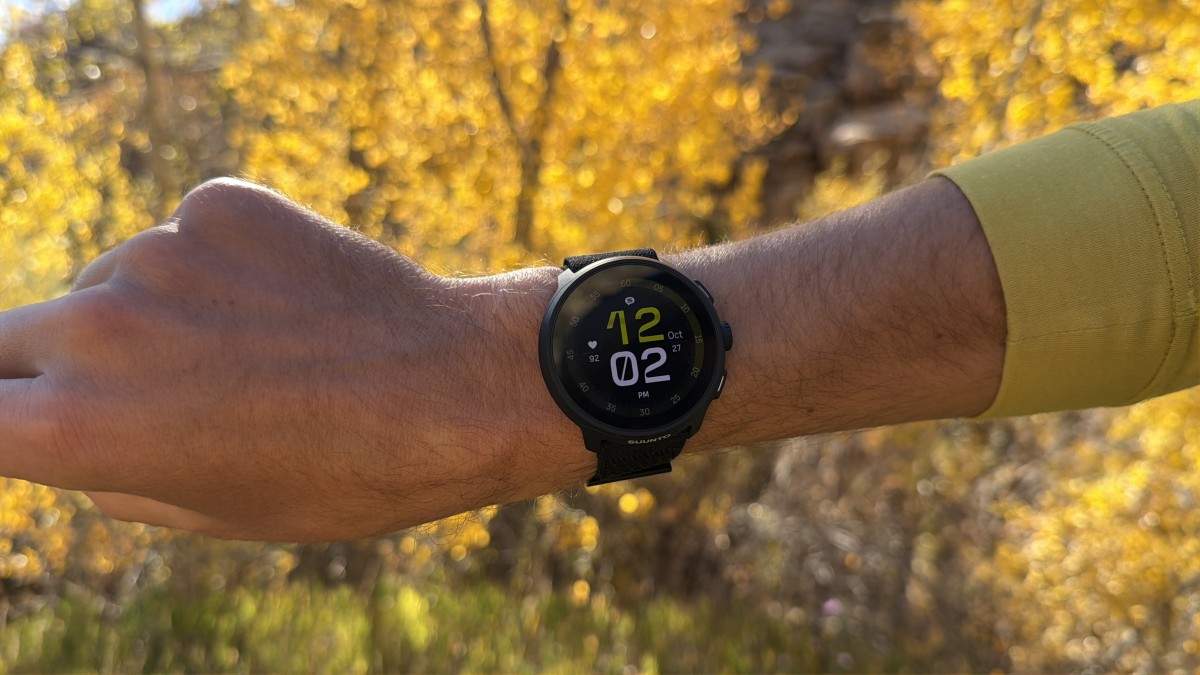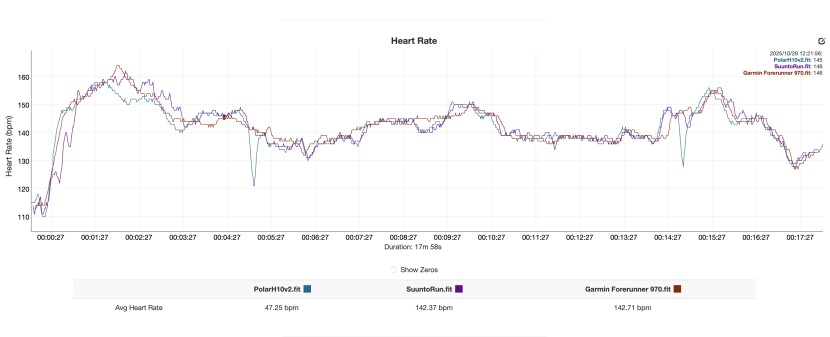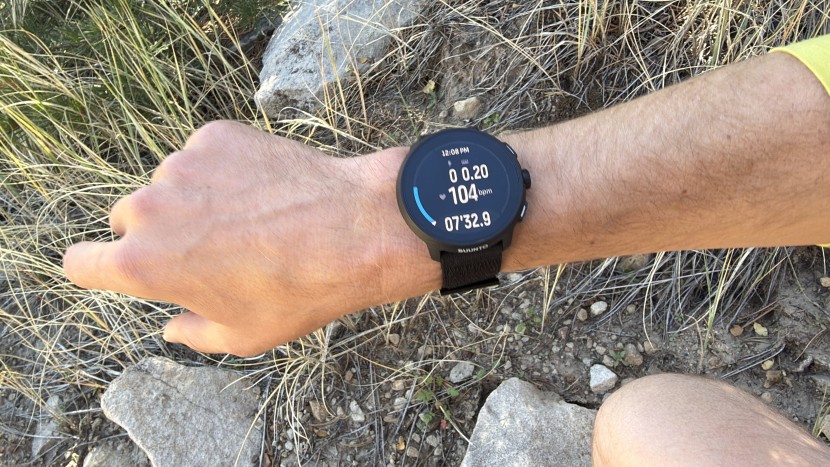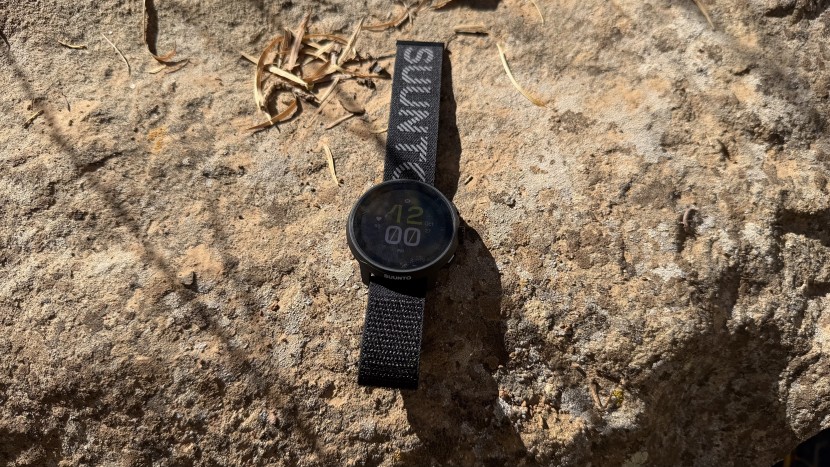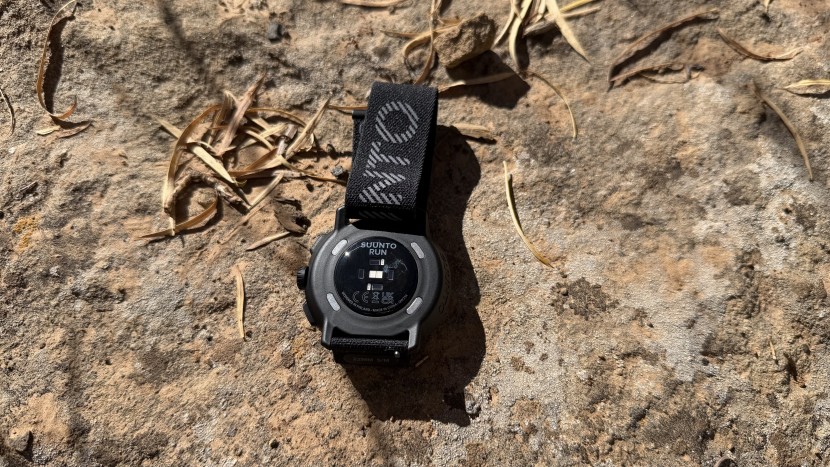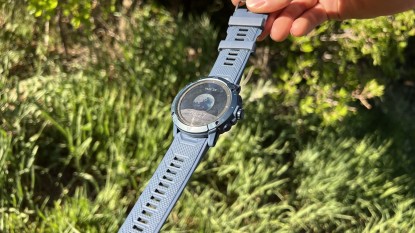Suunto Run Review

Our Verdict
Our Analysis and Test Results
The dual-frequency GPS and optical HR on the Suunto Run offer flagship-level performance without breaking the bank. The AMOLED screen is bright and offers a smooth UI, featuring items that are most important for exercise. Folks who prioritize the smartwatch aspect may find the notifications and phone integration to be lacking. However, the model still features items like offline music, track mode, and recovery widgets. If your priorities lean towards exercise and you only require basic smartwatch functionality, we highly recommend this reasonably priced watch.
Accuracy
The Suunto Run performs impressively well for both GPS and heart rate tracking, especially considering its price. The dual-frequency GPS matches closely with higher-end models I tested, delivering clean tracks even under tree cover or near rock walls. The new Track Running mode locks onto your lane after a short calibration, delivering precise distance accuracy on 200- and 400-meter repeats. Regular runs and road workouts show consistent pacing and strong satellite lock, even in areas where other watches tend to drift. Our tests demonstrated strong GPS accuracy, tracking a distance of 1.98 miles for our known 2-mile course.
Heart rate accuracy is generally solid for running and general workouts, but less consistent during cycling or high-intensity intervals. In resting HR trials, the readings aligned perfectly with those from the Polar H10 HR monitor, against which we tested this watch. The Run also produced almost identical results to our HR monitor in our moving tests, tracking a reading of +/- 1 BPM on average. Like most optical sensors, it struggles with vibration and quick HR changes. The option to use a Bluetooth chest strap solves this completely and provides accurate readings across all activities. Elevation data remains stable, and GPS distance measurements align well with those of other watches in side-by-side tests.
Activity Use
The Suunto Run covers nearly every workout, certainly all that most fitness users will ever need. With 34 sports profiles, there is everything from running, cycling, swimming, winter sports, and mountain sports. Higher-end models have upwards of 100 profiles; if you're missing one on this watch, you can duplicate and customize an existing model to match your needs.
With full breadcrumb route navigation, you can easily use the Run to stay on track. While it's not a fully detailed map, I found it more than adequate, and only pulled out my phone for more complicated navigation questions. Surprisingly missing is the trackback feature, but you can reverse your breadcrumb map to a similar effect.
For folks who use external HR straps or power meters, these can be added via Bluetooth only. The Run also provides training metrics – core items include Training Stress Score, Chronic Training Load, Training Stress Balance, and Training Volume. I want a GPS watch to support my daily exercise, and this set covers all my most important needs. At this price point, it's hard to beat the performance of this unit.
Everyday Use
The touch-enabled AMOLED screen is bright and easy to read both indoors and out, and the interface feels smooth when scrolling between widgets. I generally like to keep the always-on mode enabled, which works well for quick glances. Keep in mind this setting greatly impacts battery life, so it's best avoided for longer outings or multi-day trips without a charger.
As with most GPS watches, widgets can be customized to display data such as steps, sleep, recovery, and heart rate. The Suunto Run does not support a sleep score, which is a bit of a bummer since I like having a single, easy-to-read number instead of doing mental math each morning. Notifications are not nearly as polished as more expensive models. Notably, the watch lacks the sender's name – you'll need to pull out your phone for more context. This watch strikes a good balance between functionality and simplicity, offering just enough smart features without becoming distracting, which makes it a nice GPS watch for folks focused on training.
Extra Features
The Run introduces a few useful upgrades over previous Suunto models, the most notable being offline music playback. It includes 4 GB of storage for MP3s and connects to Bluetooth headphones, but unfortunately, it doesn't support streaming apps like Spotify or Amazon Music. Music must be transferred manually, which feels dated, though it's still a nice addition at this price point.
Other highlights include a new metronome, hydration and nutrition reminders, a Marathon mode with estimated finish times, and voice feedback through Bluetooth headphones. The watch doesn't support SuuntoPlus apps or custom watch faces, but Suunto has built in popular options like Ghost Runner and Challenge Mate. These small extras round out the experience and make the Run feel more capable without adding unnecessary complexity.
Wearability
The Suunto Run feels lightweight on your wrist and more than comfortable for all-day wear. At just 36 grams with the included fabric strap, it's one of the lightest GPS watches I've tested. The 11.5mm case sits low and doesn't catch on sleeves or gloves, making it a good fit for year-round use. The fabric strap is soft and breathable, and Suunto includes two strap lengths in the box, ensuring a secure fit for most wrist sizes.
The watch design is clean and modern, featuring a stainless steel bezel that feels more premium than the price suggests. The three-button layout, featuring a digital crown, feels familiar and responsive, and the watch continues Suunto's simple, no-nonsense design language. As with most Suunto watches, you can expect excellent build quality; the Run is no different, striking a great balance of durability and comfort.
Battery Life
The battery life on the Suunto Run is solid for its size, although it won't match that of more endurance-focused models. I averaged around three days of use with the always-on display enabled and about one hour of daily workouts. Turning off the always-on screen easily doubles that, making it possible to get close to a full week between charges.
In GPS tracking tests, I got 19 hours in the highest accuracy mode, and Suunto claims up to 40 hours in endurance mode. For everyday use and regular training, the battery life is more than adequate. However, heavy GPS users or multi-day adventurers will want to charge more frequently or consider upgrading to the Race or Vertical models. The Run now includes a USB-C charging cable with a magnetic connection, although it's not particularly strong, so placement is crucial for a good charge.
Should You Buy the Suunto Run?
The Suunto Run presents an outstanding value for athletes. Excellent accuracy at a mid-range price, a lightweight, durable package, and a great AMOLED screen make this an easy recommendation. Our only hesitation is relatively lower battery life – if you need to run this watch for multi-day efforts, you may want to consider a different watch.
What Other GPS Watches Should You Consider?
If you need more battery life but want to stay in the same price range, consider the Coros Pace 3. This watch offers approximately 15 hours of GPS recording time, equivalent to roughly a week of smartwatch usage. If you're a more serious athlete and want all the latest offerings, we recommend the Garmin Forerunner 970. This has the most advanced health metrics, recovery indicators, and running dynamics.


